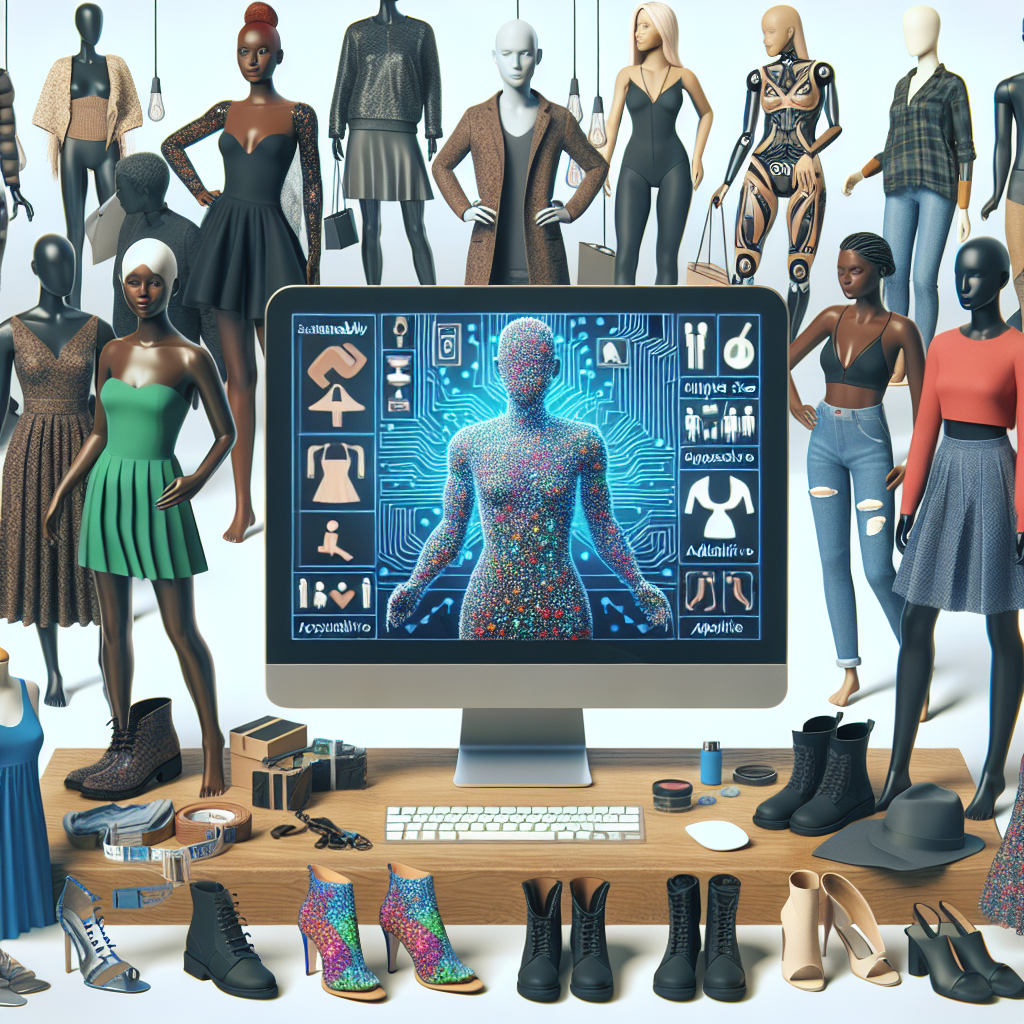Breaking Down Barriers: How AI is Making Fashion More Inclusive
Fashion has long been seen as an exclusive industry, with high barriers to entry for both consumers and designers. However, with the rise of artificial intelligence (AI), the fashion industry is becoming more inclusive than ever before. AI is revolutionizing the way we interact with fashion, from personalized shopping experiences to more diverse and inclusive representation in advertising and design.
In this article, we will explore how AI is breaking down barriers in the fashion industry, making it more accessible and inclusive for people of all backgrounds.
Personalized Shopping Experiences
One of the most significant ways AI is making fashion more inclusive is through personalized shopping experiences. With the help of AI algorithms, retailers can now offer personalized recommendations to customers based on their preferences, size, style, and budget. This not only helps customers find clothes that fit their individual needs but also ensures that they feel seen and understood by the brands they are shopping with.
For example, online retailer Stitch Fix uses AI to create personalized style profiles for each of its customers. By analyzing data on their preferences, body shape, and style goals, Stitch Fix is able to curate a selection of clothing that is tailored to each customer’s unique needs. This level of personalization ensures that customers of all sizes, shapes, and styles can find clothes that make them feel confident and comfortable.
In addition to personalized recommendations, AI is also being used to improve the online shopping experience for people with disabilities. Companies like Nike and Tommy Hilfiger have developed AI-powered tools that allow customers to search for clothing by specific accessibility needs, such as easy-to-open closures, adjustable waistbands, and sensory-friendly materials. By leveraging AI technology, these brands are able to create more inclusive shopping experiences for people with disabilities, ensuring that everyone has access to fashionable and functional clothing.
Diverse and Inclusive Representation
Another way AI is making fashion more inclusive is by promoting diverse and inclusive representation in advertising and design. Historically, the fashion industry has been criticized for its lack of diversity in advertising campaigns, runway shows, and editorial content. However, with the help of AI, brands are now able to create more inclusive and representative imagery that reflects the diversity of their customer base.
For example, AI-powered photo editing tools like Adobe Sensei can be used to automatically detect and correct bias in images, such as skin tone, hair color, and body size. By using these tools, brands can ensure that their advertising campaigns feature a diverse range of models and reflect the true diversity of their customers. This not only helps to create a more inclusive and representative image of beauty but also helps to challenge harmful stereotypes and promote body positivity.
In addition to promoting diversity in advertising, AI is also being used to promote diversity in design. Companies like Uniqlo and Adidas are using AI algorithms to analyze data on customer preferences and trends, allowing them to create more inclusive and diverse clothing collections. By leveraging AI technology, these brands are able to design clothing that appeals to a wider range of customers, including people of all sizes, shapes, and styles.
Overall, AI is enabling brands to create more inclusive and representative fashion collections that cater to the diverse needs of their customers. By leveraging AI technology, brands can ensure that everyone feels seen, heard, and represented in the fashion industry, breaking down barriers and promoting a more inclusive and diverse industry.
FAQs:
Q: How is AI being used to personalize shopping experiences in the fashion industry?
A: AI is being used to personalize shopping experiences by analyzing data on customer preferences, size, style, and budget. Retailers can use AI algorithms to create personalized style profiles for each customer, ensuring that they receive tailored recommendations that meet their individual needs.
Q: How is AI promoting diverse and inclusive representation in fashion advertising?
A: AI is promoting diverse and inclusive representation in fashion advertising by detecting and correcting bias in images, such as skin tone, hair color, and body size. Brands can use AI-powered photo editing tools to ensure that their advertising campaigns feature a diverse range of models that reflect the true diversity of their customers.
Q: How is AI being used to promote diversity in fashion design?
A: AI is being used to promote diversity in fashion design by analyzing data on customer preferences and trends. Brands can use AI algorithms to create more inclusive and diverse clothing collections that appeal to a wider range of customers, including people of all sizes, shapes, and styles.
Q: How is AI helping to create more inclusive and accessible fashion for people with disabilities?
A: AI is helping to create more inclusive and accessible fashion for people with disabilities by developing tools that allow customers to search for clothing by specific accessibility needs. Brands can use AI technology to ensure that their clothing is functional and fashionable for people with disabilities, promoting inclusivity and accessibility in the fashion industry.

